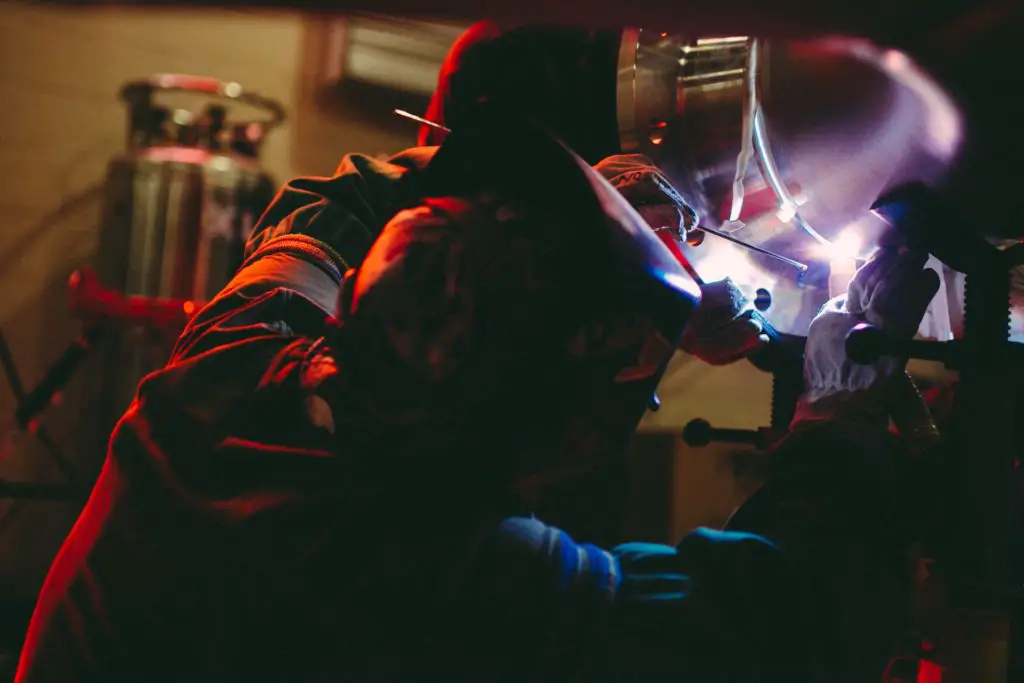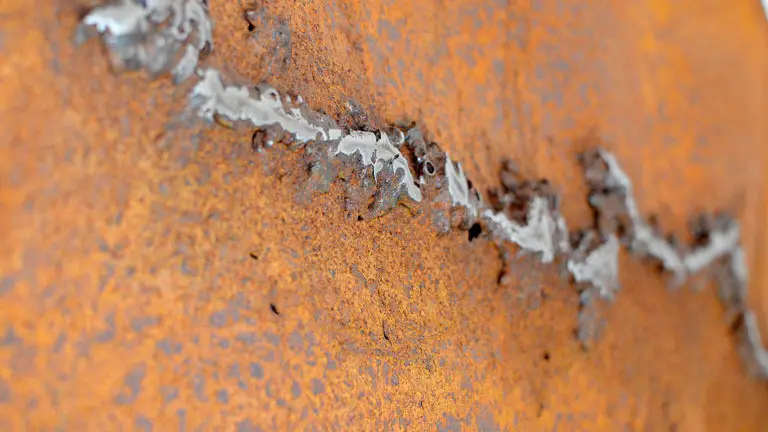Corten is also known as weathering steel. It is a type of steel that easily rusts and usually creates a beautiful patina that most people find desirable. Its unique rust-like appearance makes it attractive in any architectural or landscape design. However, while it is eye-catching, not everyone knows how to weld corten steel. You’re in luck if you’re wondering about the steps required to weld corten steel.
In this article, we’ll cover how easy it is to weld corten steel, the steps required to weld corten steel, and topics like the right welding rod to use and its similarity to mild steel. Without further ado, let’s dive in.
Is It Easy to Weld Corten Steel?
Welding corten steel is more complex than conventional steel. This is because it has a higher level of alloys like chromium, copper, and chromium. Additionally, its increased manganese and carbon content can be challenging to weld. The high level of these elements results in brittleness in the heat-affected areas. This could result in reduced corrosion resistance and cracking.
However, welding corten steel becomes much easier with proper techniques and preparations. Using suitable filler metals can also make welding corten steel easier. For a successful weld, you need to preheat the material and control the interpass temperature when welding corten steel.
Conclusively, welding corten steel can be difficult. However, with the proper precautions and techniques, it gets much easier.
What Welding Rods Should I Use to Weld Corten Steel?
To successfully weld corten steel, you need to use filler materials that match the chemical composition of corten steel and have a similar color match after rusting. Using the wrong filler metal usually produces a poor weld with reduced corrosion resistance and cracking. The most common options are AWS E8018-W and AWS-E7018.
- AWS-E8018-W: This low-alloy steel electrode has high levels of chromium and nickel. This makes it an ideal option for welding corten steel. The high levels of these elements will provide the perfect resistance to atmospheric corrosion. You can use AWS-E8018-W to weld corten to itself, dissimilar metals, and other weathering steels.
- AWS-E7018: This welding rod is also a low-hydrogen electrode ideal for welding corten. This option has a higher silicon and manganese content. Therefore, it will successfully produce a stable arc and a strong, ductile weld deposit.
You should also consider the welding technique when choosing the right welding rod for corten steel. Different techniques require the use of varying filler metals. An example is if you’re welding a thin material. In such a case, a higher nickel content filler metal is required to ensure excellent penetration.
How to Weld Corten Steel
Welding Corten Steel requires following specific steps. This is crucial to ensure a sturdy and successful weld. Below, we’ve outlined the required steps when welding corten steel; let’s take a look.
- Start by preparing the corten steel. Remove any dirt, oil, or grease on the base metal and ensure it is dry. Next, remove any form of rust or mill scale from the edges of the metal.
- Next, preheat it to a temperature of 200°C to 300°C. This works to minimize the risk of cracking while welding.
- Now, you have to choose the correct welding technique. You can use gas metal arc welding or shielded metal arc welding. Additionally, use the right filler metal for welding your corten steel. While welding, you must maintain the interpass temperature below 350°C to ensure proper penetration and prevent cracking.
- Next, weld the edges of the metal using the correct welding technique. Keep the weld pool small and minimize the heat-affected zones using the stringer bead technique.
- After welding, it’s essential to cool the base metal slowly to room temperature. Doing this helps to prevent cracking after welding.
- Check the weld for signs of porosity or cracking and repair defects when you spot them.
That’s all it takes. Welding corten steel requires following the right steps and using the ideal filler metal and welding process. Once you follow the steps outlined above, you’ll get a sturdy and excellent weld.

Can You Weld Corten Steel to Mild Steel?
Corten steel and mild steel are two types of steel that are commonly used in construction. However, many people wonder if you can weld Corten steel to mild steel. The answer to that is yes. Welding corten steel to mild steel requires a careful approach to ensure and sturdy weld. Corten steel has high levels of alloys like nickel and copper. This could result in brittle behavior in the heat-affected zones during welding.
Therefore, when you choose to weld corten steel to mild steel, ensure you use the right filler metal and preheat it to an ideal temperature. You should also perform the right post-weld heat treatment to prevent cracking.
Can You TIG Weld Corten Steel
Corten steel is sometimes tricky to weld. However, following the proper techniques is an excellent way to add weather resistance and strength to your structure. Corten is an excellent metal for TIG welding because it produces strong and clean welding. TIG welding utilizes a non-consumable tungsten electrode to create a clean and precise result.
However, you should note that welding corten requires following the proper techniques to minimize the risk of cracking. The right filler material is also essential because making the wrong choice can reduce the tensile and yield strength. Additionally, it will remove the corrosion resistance feature, which is crucial when using corten steel in sturdy structures like iron bridges.
Is Corten Steel Just Mild Steel?
No, it isn’t. Corten steel is a form of weathering steel that was developed to resist rusting. On the other hand, mild steel is a non-weathering steel that’s not resistant to rusting like corten steel. They’re both used in structures which is where the confusion comes from. However, the most salient difference between the two lies in their level of corrosion resistance.
While mild steel corrodes easily, corten steel doesn’t because of its creation method. This difference makes them ideal for different applications. While most people use corten steel for architectural and landscape designs due to its corrosion resistance, mild steel is commonly used for fabrication and construction because of its affordability, strength, and durability.
Conclusion
As corten steel becomes popular for various outdoor projects, it’s essential to learn how to weld it properly. It requires some extra steps compared to ordinary steel, so it’s easy to get it wrong. However, with the right techniques, knowledge, and tools, you can easily tackle this task without any issues. Follow the steps above and choose the right welding rod, and you’ll have no problem achieving a strong and durable corten steel weld every time.


Add comment